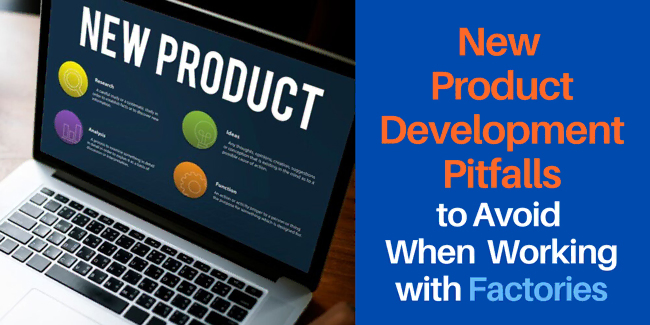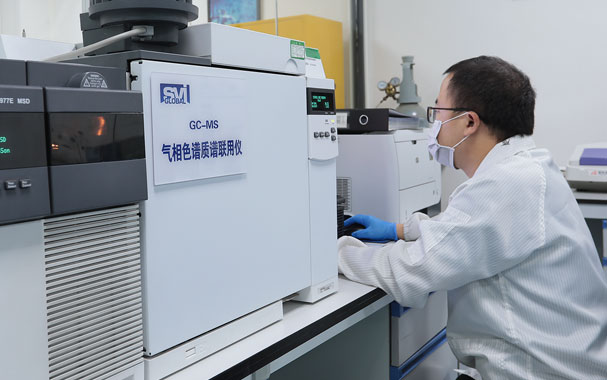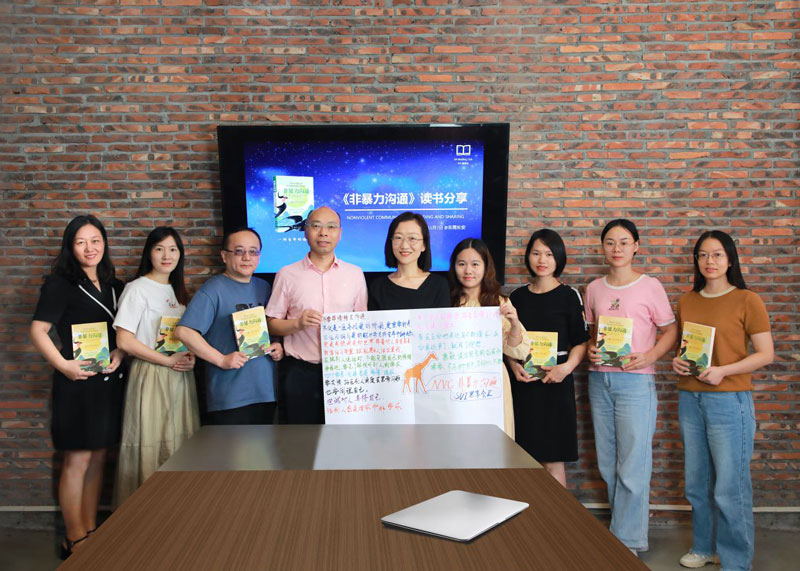8 Common New Product Development Pitfalls to Avoid When Collaborating with Factories
- Date:
- Author: SVI Content Team
- Share:
Collaborating with factories offers several advantages for businesses, such as access to specialized equipment, production expertise, and cost savings. Working with factories also allows businesses to leverage their resources to scale production and bring new products to market quickly.
While collaborating with factories can be advantageous, it also comes with its own set of challenges. Communication breakdowns, quality control issues, and cost overruns are just a few examples of the common pitfalls that businesses may encounter during new product development.
In this blog, SVI will outline the 8 common challenges in new product development that businesses should watch out for when collaborating.
Pitfall 1. Failing to Vet Potential Factory Partners Thoroughly
One of the biggest mistakes in new product development is working with the wrong team. The development team should be composed of members who have relevant skills and experience in the product design and development process.
Failing to vet potential factory partners can lead to failure in product development. Finding the right supplier to manufacture your product is critical to ensuring that your product development process is successful.
How to Avoid the Pitfall:
Therefore, when choosing a factory partner, it’s important to do market research and have a clear product development strategy. This should help you identify the appropriate time to engage with a factory partner and the scope of work required and also help you avoid scope creep and redundant work, ultimately saving time and project costs.
Pitfall 2. Poor Project Planning and Management
Product development is a complex and time-consuming process that requires careful planning and management. The new product development process typically involves several stages: ideation, product design, prototyping, testing, and production launch. Each stage has its unique set of tasks that are required to be finished within specific timelines to ensure the project is on track.
Unfortunately, poor timeline planning and management can disrupt the entire product development process and cause project delays.
How to Avoid the Pitfall:
Creating an effective timeline planning and management is primary. It is essential to establish clear communication channels and provide regular updates on the project’s progress to keep both slides on the same page.
Pitfall 3. Quality Control Challenges Faced in New Product Development
Quality control is a critical aspect of product development that can make or break a project. Quality issues arise when collaborating with factories could be due to:
1. Poor Product Definition:
The lack of a clear definition of the product may lead to miscommunication between the product development team and the factory, resulting in the factory producing a product that does not meet the required quality standards.
2. Inadequate Product Testing:
Products may come out under quality standards when testing is not thorough enough or done only for a limited range of scenarios.
3. Design and Engineering Issues:
Changes in product design can create engineering challenges, which may lead to factories delivering products that do not meet quality standards.
4. Supply Chain Management Issues:
Managing the supply chain during the product development stage can pose significant quality control challenges. Any delays or disruptions in the supply chain can lead to a significant impact on the quality of the final product.
5. Communication Issues:
Misunderstandings and communication breakdowns can lead to quality control challenges, jeopardizing the success of the project. This can arise due to language barriers, cultural differences, time zone differences, and no regular chatting.
How to Avoid the Pitfall:
- Effective communication is good for successful collaboration between the product development team and the factory.
- Establish clear and concise communication channels and protocols to ensure that all parties involved have a shared understanding of the project’s goals and requirements.
- Regular updates and progress reports can also help mitigate communication issues and ensure that the project stays on track.
To have a more detailed guide, learn more from: How to Solve Quality Issues in Manufacturing.
Pitfall 4. Inadequate Intellectual Property Protection During Collaboration
Limited measures in intellectual property protection can result in the unauthorized use of proprietary information or design when a product development team shares its product design and development process with other companies or collaborators.
IP disputes can arise if a third-party company claims ownership or copyright of the product design or development, leading to legal battles and significant financial loss as well as reputation for the original company.
How to Avoid the Pitfall:
To protect your intellectual property during the new product development procedure, companies can take advantage of non-disclosure agreements (NDAs), patents, and trademarks.
NDAs can help protect confidential information shared during collaborations, while patents and trademarks can help protect the company’s IP from infringement and disputes.
Pitfall 5. Lack of Clear Product Goals
When developing a product, having clear and specific goals is essential for success. An explicit goal in product development should specify the desired outcome, what the product aims to achieve, target the primary users and what resources can be used. This should help you focus on the key elements in the broad perspective.
Contrarily, a lack of clear product goals can lead to several negative impacts on product quality standards and material selection:
- Project Delays: No specifying what the end product should look like or its functionality and features, there is a greater risk of project delays because the development team may spend additional time trying to refine the product.
- Increased Costs: With an ambiguous product goal, it also takes extra time and expenses. For example, if the production team selects materials that are not suitable for the product, they may need to be replaced, causing inefficient use of time and budget. Moreover, without clear goals, it is difficult to negotiate a fair price with the factory.
Here are some best practices for setting clear product goals:
- Give a Price Range: Providing a price range upfront can help the production team understand the budget and ensure that the final product aligns with the expected costs.
- Provide Quality or Material Samples: Sharing reference samples of the quality or materials can help the production team better understand the desired outcome and avoid misunderstandings.
- Ask for a Cost Breakdown: Receiving a cost breakdown from the factory’s quotes can help the production team understand the costs associated with each component and negotiate a fair price.
- Project Annual Quantity: Providing a projection of the annual quantity needed can give the factory a better understanding of the project’s significance and enable them to offer a more competitive price.
By implementing these best practices, it is possible to set clear product goals and avoid the negative impacts associated with unclear objectives.
Pitfall 6. Absence of Detailed Product Specification Sheet
One of the new product development risks and challenges is without a clear and comprehensive product specification sheet. This could result in misunderstandings between factories and the PD team.
When the factory team is not clear on the product’s specifications, they may make assumptions or cut corners that can result in a product that does not meet the desired quality standards. This can cause delays in production, rework, or even product recalls, which can be very costly for the manufacturer.
To avoid mistakes in new product development, create a detailed product specification sheet that outlines all of the product’s requirements and specifications. The sheet should include information on:
- Products’ design
- Materials
- Dimensions
- Tolerances
- Quality standards
- Packaging
- Labeling
It should also include clear and concise instructions on how the product should be manufactured, assembled, and tested.
Pitfall 7. Unclear Packaging Requirements Can Impact Your Final Product Quote
Packaging is crucial to product integrity. When clients provide unclear packaging specifications, factories may make assumptions that lead to costly errors, such as using inappropriate materials or inadequate protection during shipping.
This uncertainty can also delay the development process, as factories may need to seek clarification, increasing project timelines and costs. Moreover, poorly designed packaging can compromise product quality, resulting in higher defect rates and returns.
How to Avoid the Pitfall:
To prevent these new product development challenges, establish clear packaging requirements at the outset of the project.
Use detailed product specification sheets to outline materials, dimensions, and other essential details. Collaborate with a reputable factory experienced in product development and packaging design.
Pitfall 8. Neglecting Product Testing During Manufacturing
Product testing after the product development stage is critical as well. The products may encounter new issues in the production process. Therefore, involving testing the product’s functionality, durability, reliability, and safety at every stage to make sure the outcome meets the requirements needs patient to implement.
Product testing helps to identify product defects and quality issues that may arise during the manufacturing process. Without testing its durability, it may break easily during use, leading to customer dissatisfaction and returns.
More seriously, when a factory comes to using non-compliant materials without proper testing, they run the risk of using materials that are not compliant with US regulations. This can be harmful to consumers and lead to serious fines and legal consequences from the US government.
How to Avoid the Pitfall:
To avoid these risks, factories must prioritize product testing to ensure safety and compliance with U.S. regulations. stay up to date with the latest regulations and ensure that their materials are regularly tested and updated as needed.
Wrapping Up
Any fresh start with a new factory takes time and effort to achieve optimized goals in product development. This will involve challenges in new product development that need to be addressed.
We’ve discussed common mistakes in product development and how to take action to reduce the risks of the pitfalls. Being fully prepared may seem difficult, but taking a step ahead at the beginning can mean a lot. So, start from the beginning, carefully select your partners, work out a project plan, set clear product goals and specifications, etc.
Throughout the development process, maintaining open and timely communication is of importance. The focus on communication is able to boost the development process effectively and lead to better results.
If you’re looking for a reliable supply chain partner to avoid the new product development pitfalls above, SVI Global is here to help.
As an American-owned company, we have extensive experience in dealing with challenges in global manufacturing and supply chain. Sourcing products from regions like Asia and Mexico is one of our services, while product development is also included.
Our team is equipped with experienced merchandisers and engineers who can help you navigate potential issues in product development. We will take measures, such as factory audits, quality control inspections, intellectual property protection, and product testing to enhance the consistent quality throughout the whole process.
With our commitment to transparency, communication, and quality assurance, we are confident that we can help you streamline your supply chain and ensure the success of your product launch.











